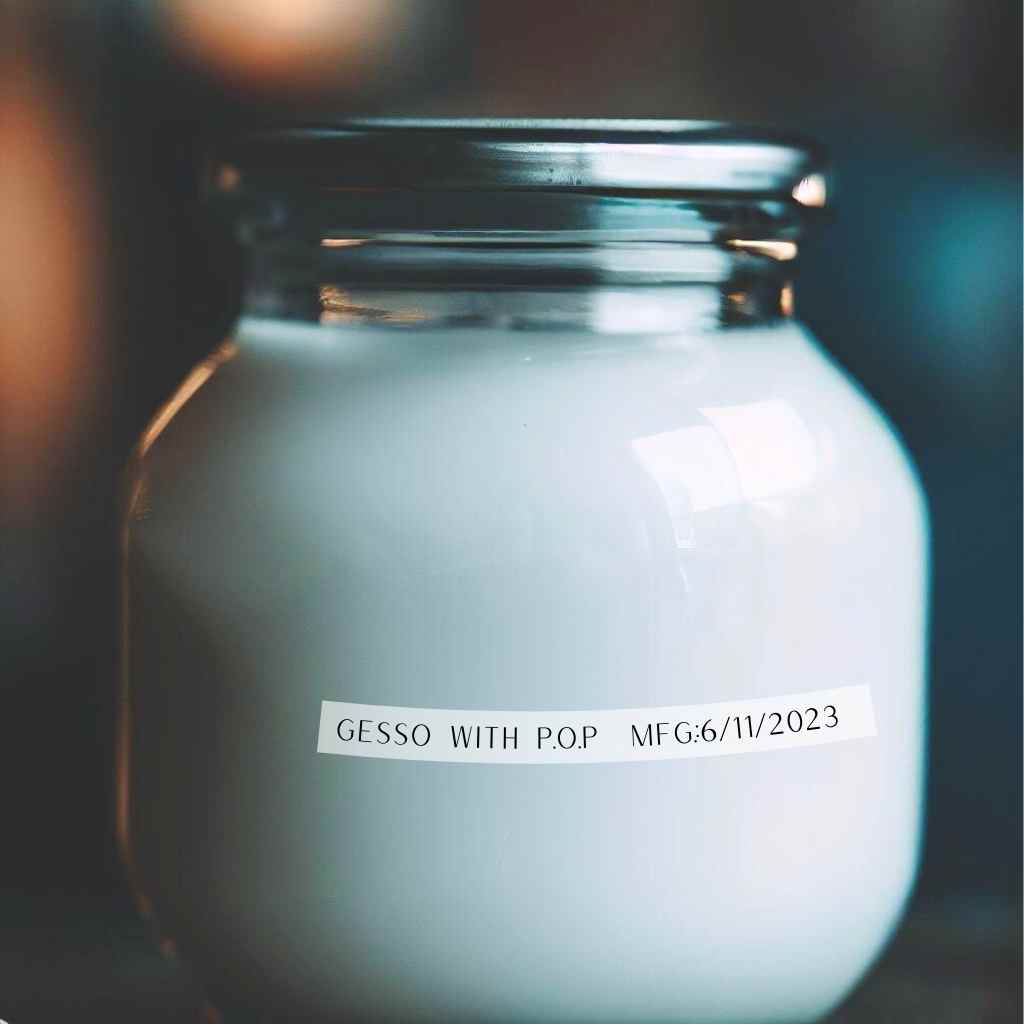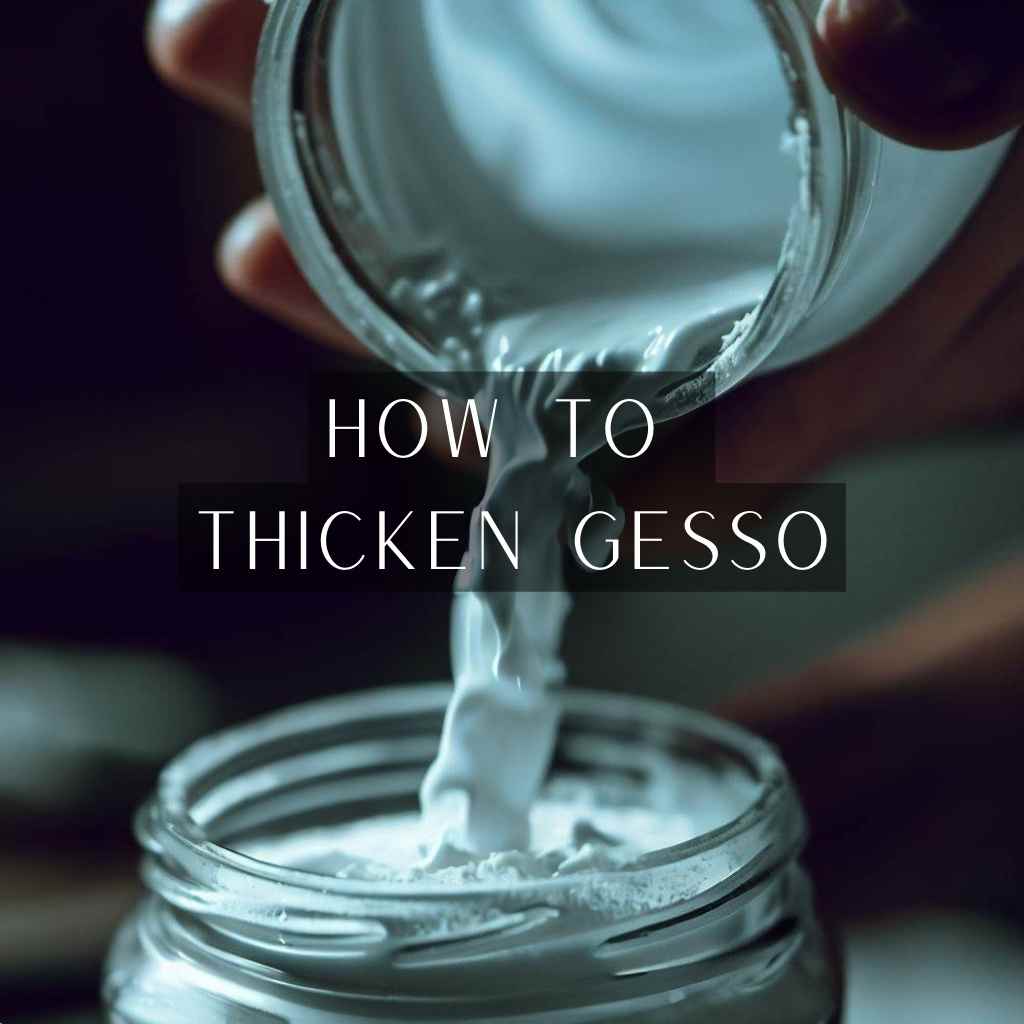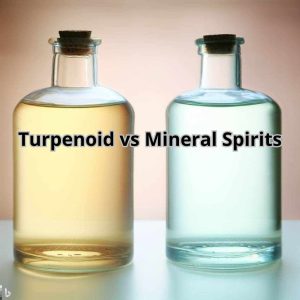Are you ready to unlock a world of artistic possibilities? Whether you’re a seasoned painter or a budding artist, how to thicken gesso is a topic that will take your art to the next level.
In this comprehensive guide, we will delve into the fascinating world of gesso and explore the transformative power of thicker gesso.
From enhancing texture and achieving opacity to filling imperfections and building layers, thickened gesso opens up a realm of creative exploration.
Get ready to unleash your creativity and breathe life into your artistic visions!
Reasons for Thickening Gesso

There are several reasons why you might want to thicken your gesso:
- Enhanced texture and body: Thickening gesso allows you to create textures and impasto effects on your artwork, adding depth and dimension to your paintings.
- Creating a more opaque surface: Thicker gesso provides better coverage, ensuring the underlying surface is completely concealed, even when using transparent or semi-transparent paints.
- Filling in imperfections and building layers: By increasing the viscosity of gesso, you can effectively fill in any surface imperfections and build up multiple layers for a smoother and more refined finish.
Common Thickeners for Gesso
When it comes to thickening gesso, artists have a range of common thickeners to choose from. Each thickener brings its unique qualities and effects to the gesso mixture, allowing artists to customize their gesso according to their artistic vision.
Commonly used thickeners in traditional gesso recipes are :
- Chalk,
- marble dust,
- gypsum, and
- silica
Let’s take a closer look at these common thickeners, along with their pros and cons, in the following table:
| Thickener | Pros | Cons |
| Chalk | – Provides a smooth texture – Offers excellent opacity – Readily available and affordable | – May increase drying time |
| Marble Dust | – Adds body and density – Provides unique artistic effects – Enhances depth in the artwork | – Can create a slightly rougher surface – May increase drying time |
| Gypsum | – Offers high opacity – Provides a smooth finish – Dries relatively quickly | – Excessive amounts may lead to brittleness |
| Silica | – Helps achieve a thicker texture – Maintains a smooth texture – Faster drying time compared to others | – High amounts may lead to brittleness – May require careful handling |
Other Additives
Apart from the traditional thickeners mentioned above, artists often experiment with other additives to achieve unique textures and effects in their gesso. These can include materials such as
- Pumice: adds a gritty texture, and
- glass beads: create a reflective and sparkling surface.
How to Thicken Gesso: Using Traditional Thickeners
One way to thicken gesso is by incorporating traditional thickeners such as chalk or marble dust. Here’s a step-by-step guide to achieving the desired consistency:

- Mixing gesso with chalk or marble dust: Start by preparing a batch of gesso according to your preferred recipe. Gradually add small amounts of chalk or marble dust to the mixture.
- Achieving the desired consistency: Continuously stir the mixture and assess the texture. Add more thickener if a thicker consistency is desired, ensuring that the mixture remains homogeneous.
- Tips for achieving a smooth texture: To achieve a smooth texture, sift the chalk or marble dust before adding it to the gesso mixture. This helps eliminate any clumps or impurities.
Enhancing Gesso with Acrylic Mediums
Another approach to thickening gesso involves utilizing acrylic mediums. Acrylic gels and pastes are popular choices for achieving desired thickness and texture. Here’s how you can enhance gesso with acrylic mediums:
- Acrylic mediums (gels, pastes): Acrylic mediums are gel-like substances that can alter the consistency and properties of acrylic paints. They come in various forms, such as gels, pastes, and modeling pastes.
- Mixing gesso with acrylic gels and pastes: Start by preparing your gesso mixture. Gradually add small amounts of acrylic gels or pastes while continuously stirring. This will thicken the gesso and impart the desired texture.
- Achieving desired thickness and texture: Experiment with different ratios of gesso to acrylic mediums to find the ideal balance for your specific needs. Remember to maintain the consistency of the mixture by thoroughly mixing.
Alternative Thickeners to Thicken Gesso
In addition to traditional thickeners and acrylic mediums, there are other unconventional materials you can experiment with to achieve thicker gesso. Consider the following options:
- Using drywall compound for the extra body: Drywall compound, commonly used in construction, can be added to gesso to increase its thickness. It provides an excellent body and can create unique textural effects.
- Incorporating joint compound for texture: Joint compound, used for filling gaps between drywall panels, can also be utilized as a thickener. It offers a gritty texture, allowing you to achieve interesting surface effects.
- Experimenting with other unconventional thickeners: Don’t be afraid to think outside the box. You can explore materials like sawdust, ground coffee, or even crushed eggshells to experiment with different textures and effects.
Testing and Adjusting Thickness of Gesso
Before applying thickened gesso to your artwork, it’s essential to conduct a small test batch to evaluate the thickness and texture. Follow these steps to ensure optimal results:
- Conducting a small test batch: Prepare a small amount of thickened gesso using your chosen method. This allows you to observe the results without wasting a significant amount of materials.

- Evaluating the thickness and texture: Apply the test batch of gesso to a sample surface using your preferred technique. Assess the thickness and texture once it dries. Make note of any adjustments you’d like to make.
- Making necessary adjustments as needed: Based on your evaluation, adjust the thickness by adding more gesso or thickener if required. Repeat the test until you achieve the desired consistency for your artwork.
Tools and Techniques for Mixing
To effectively mix your gesso and achieve a homogeneous and lump-free consistency, you’ll need the right tools and techniques. Consider the following:
Essential tools for mixing gesso
- A sturdy container or mixing palette
- A palette knife or a spatula
- A whisk or a hand mixer
Step-by-step guide for proper mixing
- Start by combining the gesso base and the chosen thickener in the mixing container.
- Use a palette knife or spatula to blend the ingredients, ensuring there are no clumps.
- If necessary, employ a whisk or hand mixer for a more uniform texture.
Achieving a homogeneous and lump-free mixture
Continuously mix the gesso until a homogeneous and lump-free consistency is achieved. Take care to scrape the sides and bottom of the container to incorporate any stray particles.
How to Prepare Thicker Gesso in Bulk
If you’re working on larger projects or need a significant amount of thickened gesso, it’s essential to know how to prepare it in bulk.
Consider the following tips:
- Scaling up the recipe for larger projects: Calculate the proportions of the gesso base and thickener based on the volume you need. Ensure that you maintain the desired ratio while increasing the ingredients.

- Storage and shelf life considerations: Store the excess thickened gesso in airtight containers to prevent it from drying out. Keep it in a cool and dry place away from direct sunlight. Note the expiration date of the gesso base and use it accordingly.
- Maintaining consistency over time: Before using the stored thickened gesso, give it a thorough mix to restore its homogeneity. Add a small amount of water if needed to adjust the consistency back to its original state.
Customizing Thickened Gesso
Thickened gesso provides an opportunity to personalize your artistic creations. Consider the following customization options:

- Adding pigments for colored gesso: Enhance the visual impact of your artwork by adding pigments to your gesso mixture. This allows you to create colored gesso and expand your artistic possibilities.
- Incorporating additives for special effects: Explore the use of additives such as pumice or glass beads to add unique textures and effects to your gesso. These additives can create interesting surfaces for your artwork.
- Personalizing gesso for unique artistic styles: Experiment with different ratios of thickening agents and gesso bases to achieve textures that align with your artistic vision. Embrace the freedom to customize and adapt the gesso to your creative needs.
Alternative Uses for Thickened Gesso
Thickened gesso isn’t limited to traditional canvas painting. Consider these alternative uses for exploring new creative possibilities:
- Gesso as a sculpting medium: Utilize thickened gesso to sculpt three-dimensional forms on various surfaces. Its ability to hold shape and texture makes it an intriguing material for sculptural endeavors.
- Gesso for mixed media projects: Incorporate thickened gesso into mixed media artworks to provide interesting textures and surfaces. It can act as a base layer for collage, as well as a textured element for various mixed media techniques.
- Exploring creative possibilities beyond canvas: Think beyond traditional surfaces. Apply thickened gesso to wood panels, ceramics, or even unconventional materials like metal or glass. Explore the interplay between different textures and mediums.
Troubleshooting Common Issues
Gessoing is not without its challenges. Here are some common issues you may encounter and ways to troubleshoot them:
Dealing with lumps and clumps
If you encounter lumps or clumps in your gesso, pass the mixture through a fine-mesh sieve to remove any impurities. Alternatively, use a blender or a hand mixer to achieve a smoother consistency.
Excessive Thickness
If your gesso becomes too thick, making it difficult to work, gradually introduce water into the gesso mixture. Stirring continuously until the desired consistency is achieved.
If water is not desirable for your project, gradually incorporate more gesso base into the mixture. This helps balance the thickness and restore workability while maintaining the desired texture.
Uneven Texture
If your thickened gesso results in an uneven texture on the surface, mix the gesso mixture more vigorously to ensure a homogeneous consistency. Pay attention to the corners and bottom of the container, as clumps can often settle there.
Pass the gesso mixture through a fine-mesh sieve to remove any lumps or particles that may cause an uneven texture.
If the uneven texture is due to thick layers of gesso, try applying thinner coats. Build up the layers gradually, allowing each layer to dry completely before applying the next.
Long Drying Time
If your thickened gesso takes an extended period to dry, adjust the ratio of gesso base to thickener: Some thickeners, such as marble dust or gypsum, can increase drying time. Reduce the amount of these thickeners in the mixture to expedite the drying process.
Ensure proper ventilation in the drying area by using fans or opening windows. If possible, choose a drier environment or use dehumidifiers to create optimal conditions for faster drying.
FAQS
- Can I thicken gesso with acrylic paint?
While acrylic paint can add color to gesso, it is not recommended as a thickening agent. Acrylic paint has a different composition and may alter the properties and performance of gesso. It’s best to use traditional thickeners or acrylic mediums specifically designed for gesso.
- Can I use multiple thickeners in my gesso mixture?
Yes, you can experiment with combining different thickeners to achieve a desired texture. However, it’s important to test the compatibility and proportions of the thickeners to ensure they work well together. Remember to maintain the appropriate ratio of gesso base to thickeners to prevent issues with drying time and consistency.
- Can I mix different types of gesso together?
Mixing different types of gesso, such as traditional gesso and acrylic gesso, is generally not recommended. Traditional gesso and acrylic gesso have different formulations and properties. Mixing them may result in unpredictable outcomes, affecting the texture, adhesion, and durability of the gessoed surface. It’s best to use one type of gesso consistently throughout your artwork.
- Can I apply thickened gesso over an existing layer of gesso?
Yes, you can apply thickened gesso over an existing layer of gesso. Ensure that the previous layer is completely dry and cured before adding the new layer. Applying thickened gesso over existing gesso allows you to build up texture, fill imperfections, or create additional depth and opacity in your artwork.
- Can I sand thickened gesso for a smoother surface?
Yes, you can sand thickened gesso to achieve a smoother surface. Once the gesso is fully dry and cured, use fine-grit sandpaper (around 400-600 grit) and gently sand the surface in a circular motion. Sanding helps remove any imperfections, brush strokes, or texture inconsistencies, resulting in a more refined and smooth finish.
- Is it necessary to seal thickened gesso before painting?
Sealing thickened gesso before painting is not always necessary. Gesso itself acts as a protective layer and provides a suitable surface for paint adhesion. However, if you prefer additional protection or desire a specific surface finish, you can consider applying a clear acrylic varnish or sealer over the gessoed surface. This helps protect the gesso and enhances the longevity of your artwork.
Wrapping Up
As we draw to the end of our exploration on how to thicken gesso, it’s time to reflect on the transformative journey we’ve embarked upon.
Throughout this comprehensive guide, we have unraveled the mysteries of gesso and its incredible potential. From understanding the importance of gesso in art to delving into the techniques and tools for achieving a thicker consistency, we have empowered you with the knowledge and skills to elevate your artistic endeavors.
Now, armed with the ability to enhance texture, create opacity, and build layers, you are equipped to bring your artistic visions to life like never before.
So go forth, fearless creators, and experiment with confidence. Unleash your creativity, express your unique voice, and let your imagination soar. The canvas awaits your masterpieces.




